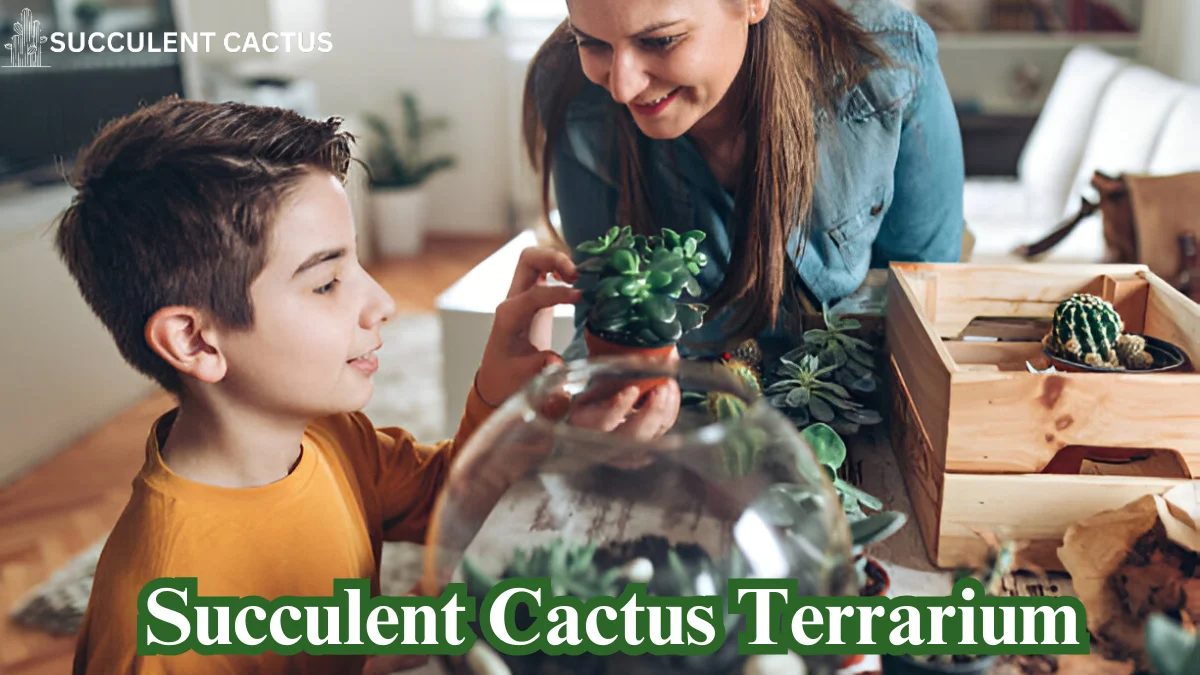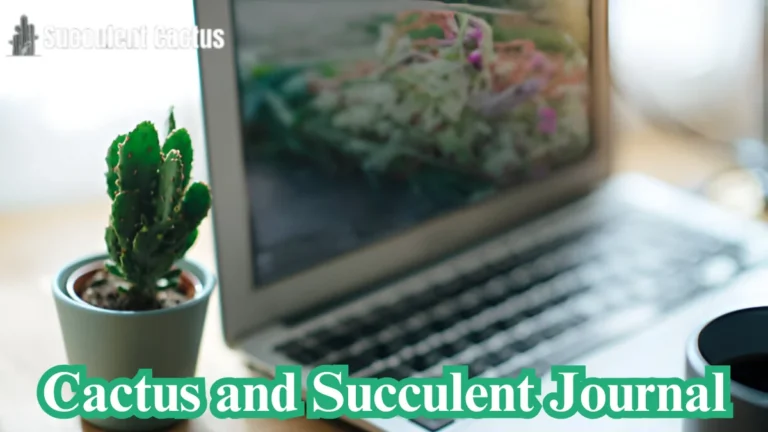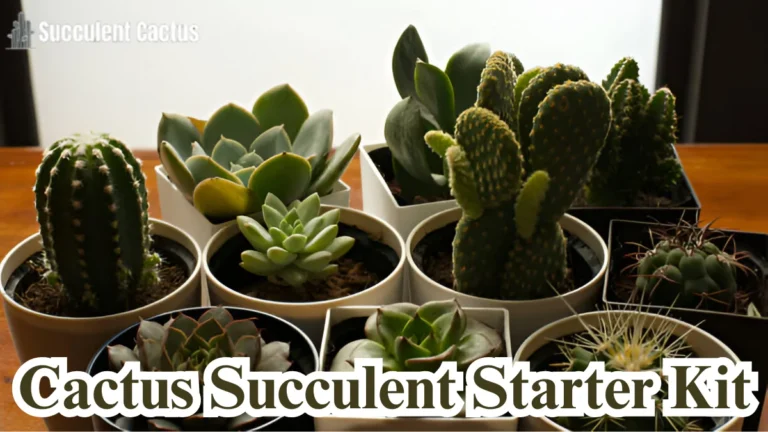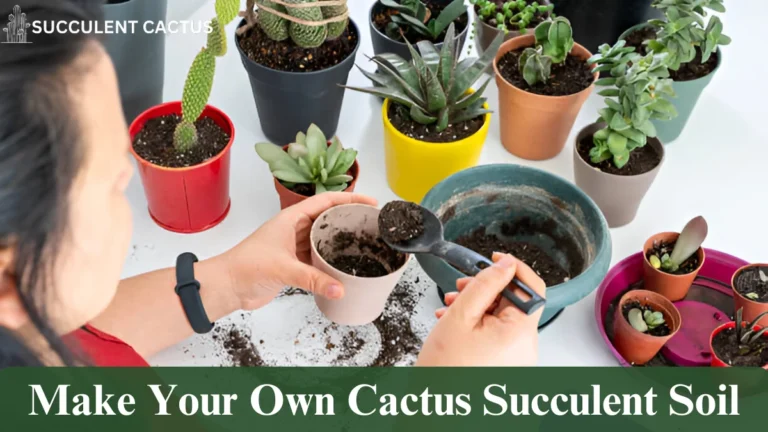The Ultimate Guide to Succulent Cactus Terrariums and Succulent Plant Terrariums

Succulent and cactus terrariums offer a stunning way to display these low-maintenance plants while adding a touch of greenery to any space. Whether you’re a beginner or an experienced gardener, learning how to create and maintain a succulent cactus terrarium ensures long-lasting, vibrant plants.
In this guide, we’ll explore the essentials of succulent cactus terrariums, from choosing the right plants and materials to designing, maintaining, and troubleshooting common issues.
What Is a Succulent Cactus Terrarium?
Understanding the Concept
A succulent cactus terrarium is a self-contained miniature garden enclosed in glass or open containers. These terrariums create a controlled environment where succulents and cacti can thrive with minimal care. Unlike traditional gardening, terrariums require specialized containers, soil, and moisture control to keep plants healthy.
The beauty of terrariums lies in their versatility. They can serve as decorative centerpieces, living gifts, or even personal gardening projects for those with limited space. Since succulents and cacti are adapted to dry environments, open terrariums are best suited for them, allowing for proper airflow and preventing excessive moisture buildup.
Benefits of Having a Succulent Terrarium
Owning a succulent terrarium has multiple advantages, making it an excellent choice for plant lovers of all skill levels:
- Aesthetic Appeal – Enhances indoor décor with a natural touch.
- Low Maintenance – Requires minimal watering and care.
- Air Purification – Some succulents improve air quality.
- Space-Efficient – Ideal for small apartments and offices.
- Stress Reduction – Tending to plants has proven psychological benefits.
- Customizable Designs – Personalize with different plant arrangements, decorative stones, and themes.
Types of Terrariums
| Type | Features | Best for |
| Open Terrarium | Allows airflow, preventing moisture buildup. | Succulents and cacti |
| Closed Terrarium | Traps moisture, creating a humid environment. | Ferns and mosses |
| Hanging Terrarium | Suspended in glass or plastic containers. | Compact succulents |
| Wall-Mounted Terrarium | Vertical gardening with limited space usage. | Decorative succulent displays |
Choosing the Right Container for a Succulent Plant Terrarium
Glass vs. Plastic Containers
Choosing the right container is essential for creating a thriving terrarium. The two main options are glass and plastic containers, each with distinct advantages.
Glass Containers
- Transparent, providing an elegant display.
- Maintains stable temperatures inside the terrarium.
- Allows better light penetration for plant growth.
Plastic Containers
- Lightweight and durable, reducing the risk of breakage.
- More affordable than glass.
- Less prone to condensation compared to glass.
For succulent and cactus terrariums, glass containers are generally preferred due to their clarity and aesthetic appeal.
Size and Shape Considerations
The size and shape of your terrarium affect plant growth and maintenance ease.
- Wide openings allow easy access for planting and care.
- Shallow containers ensure better root development and drainage.
- Geometric shapes add a modern look to terrarium design.
Best Container Options
| Container Type | Advantages | Best For |
| Fishbowl | Spacious and great for large arrangements | Home décor |
| Hanging Globe | Suspended for stylish displays | Offices & small spaces |
| Mason Jar | Affordable and widely available | DIY projects |
| Glass Vase | Tall and elegant, ideal for layering | Vertical plant arrangements |
Best Succulents and Cacti for a Terrarium
Top Succulents for a Terrarium
Not all succulents are ideal for terrariums. Some require more space, while others are sensitive to enclosed environments. The best succulents for terrariums include:
- Echeveria – Known for its rosette shape and vibrant colors.
- Haworthia – Hardy, compact, and ideal for small terrariums.
- Jade Plant (Crassula ovata) – A popular choice with thick, water-storing leaves.
- Graptopetalum – Grows in clusters and thrives in dry conditions.
Best Cacti for Terrariums
Cacti need open terrariums with excellent airflow. Some of the best choices include:
- Mammillaria – Small, easy to care for, and produces flowers.
- Rebutia – Compact cacti with bright blooms.
- Astrophytum – A star-shaped cactus that thrives in limited soil.
Plants to Avoid
Certain plants are unsuitable for terrariums because they require humidity or have aggressive root systems. Avoid:
- Ferns and mosses – These need high humidity and enclosed spaces.
- Air plants (Tillandsia) – While unique, they don’t require soil and may struggle in a traditional terrarium.
- Tropical plants – Require more water and humidity than succulents.
Soil and Drainage Essentials for Succulent Cactus Terrarium
Best Soil Mix for Succulents and Cacti
A well-draining soil mix is crucial to prevent root rot. Standard potting soil retains too much moisture, so it’s best to use a mix of:
- 50% cactus potting soil – The base medium for nutrients.
- 25% perlite – Enhances aeration and prevents compact soil.
- 25% coarse sand – Improves drainage and replicates a desert-like environment.
Importance of Drainage Layers
Without proper drainage, water accumulation can lead to fungal growth and plant rot. A layered approach is the best method:
| Layer | Function |
| Gravel/Pebbles | Prevents water from sitting at the roots |
| Activated Charcoal | Reduces mold and odors |
| Soil Mix | Provides nutrients and stability for plants |
DIY Soil Mix for Succulents
If you prefer a homemade soil mix, try combining the following ingredients:
| Ingredient | Purpose |
| Cactus Soil | Nutrient-rich base for succulents |
| Perlite | Helps with aeration and prevents compact soil |
| Sand | Improves drainage for dry-loving plants |
| Charcoal | Keeps soil fresh and free from harmful bacteria |
How to Design a Stunning Succulent Plant Terrarium
Step-by-Step Assembly Guide
Creating a beautiful terrarium involves careful layering and plant arrangement. Follow these steps:
- Add a drainage layer – Start with small pebbles or gravel.
- Insert activated charcoal – Helps absorb excess moisture and prevents odor.
- Layer the soil mix – Use a well-draining cactus soil blend.
- Plant your succulents and cacti – Space them apart to allow proper airflow.
- Decorate with rocks and moss – Enhances visual appeal without trapping moisture.
Design Inspiration and Themes
Your terrarium’s style can reflect personal preferences or seasonal themes:
- Desert Landscape – Use sand, small cacti, and decorative stones.
- Minimalist Modern – White gravel and geometric glass containers.
- Fairy Garden – Add tiny figurines and mini accessories.
Using Decorative Elements
Adding decorative elements can make your terrarium unique:
- Driftwood – Adds a rustic, natural look.
- Colored Sand – Creates layers of contrast.
- Miniature Figurines – Enhances the aesthetic of themed terrariums.
Lighting and Placement for a Succulent Cactus Terrarium
Understanding Light Requirements
Light is essential for succulents and cacti, as it affects their growth, color, and overall health. Unlike tropical plants, these desert natives thrive in bright, indirect light or direct sunlight depending on the species.
- Succulents like Echeveria and Jade Plants require at least 6 hours of bright indirect light daily.
- Cacti such as Mammillaria and Astrophytum prefer direct sunlight for a few hours each day.
- Haworthia and Gasteria can tolerate low light but still need bright conditions for optimal growth.
If your terrarium isn’t getting enough natural light, consider placing it near a south-facing window or using grow lights to supplement their needs.
Best Locations for a Succulent Plant Terrarium
Choosing the right placement ensures your plants receive adequate light while enhancing the aesthetics of your home. Here are ideal spots:
| Location | Pros | Cons |
| Near a window (south or east-facing) | Provides natural sunlight | Risk of too much heat in summer |
| Office desk | Adds greenery to workspace | May require artificial light |
| Bathroom | High humidity may benefit some plants | Not ideal for all succulents |
| Bookshelf or coffee table | Great for decoration | Ensure enough light reaches plants |
If placing your terrarium in a low-light area, opt for LED grow lights to mimic sunlight. Look for full-spectrum lights designed for succulents and cacti.
Common Lighting Mistakes to Avoid
Many people unknowingly place their terrariums in unsuitable spots. Here’s what to avoid:
- Direct sun exposure for too long – Glass terrariums can act like magnifying glasses, intensifying heat and scorching leaves.
- Complete shade – Without proper light, succulents stretch and become leggy.
- Frequent relocation – Sudden light changes can stress plants, leading to yellowing or drooping leaves.
Watering and Humidity Control in a Succulent Terrarium
How Often to Water Succulent Terrariums
Unlike traditional potted plants, succulent and cactus terrarium need infrequent watering. Overwatering is the leading cause of plant death, as it leads to root rot.
- Open terrariums require watering every 2-3 weeks.
- Closed terrariums rarely need watering, as they retain moisture.
Instead of a fixed schedule, use the soak-and-dry method:
- Check if the soil is completely dry before watering.
- Use a squeeze bottle or syringe to water only the base of each plant.
- Avoid getting water on the leaves to prevent fungal growth.
Managing Humidity Levels
Since cacti and succulents thrive in dry conditions, excess humidity inside a terrarium can cause mold and plant decay. Here’s how to manage moisture:
- Use a hygrometer to monitor humidity levels.
- Keep the terrarium open to allow airflow and prevent condensation.
- Avoid placing terrariums in bathrooms or kitchens where humidity is higher.
Signs of Overwatering and Underwatering
| Condition | Signs | Solution |
| Overwatering | Yellow, mushy leaves, black spots | Reduce watering, remove affected leaves |
| Underwatering | Wrinkled, shriveled leaves | Increase watering frequency slightly |
Common Problems and How to Fix Them
Root Rot and Fungal Issues
Root rot is one of the most common problems in succulent terrariums. It happens when water accumulates at the base, leading to mushy stems and blackened roots.
How to Fix:
- Remove affected plants and trim rotting roots.
- Allow plants to dry completely before replanting.
- Improve soil drainage by adding more perlite or sand.
Pests in Terrariums
Terrariums are generally pest-resistant, but occasional infestations can occur. The most common pests include:
- Mealybugs – Look like white cottony clusters.
- Fungus gnats – Appear when soil is too moist.
- Aphids – Small green or brown insects that feed on plant sap.
How to Treat:
- Use a cotton swab dipped in rubbing alcohol to remove mealybugs.
- Reduce watering to prevent gnats from breeding.
- Spray a diluted neem oil solution for general pest control.
Leggy and Stretched Succulents
If your succulents are growing tall and thin instead of compact and healthy, they aren’t getting enough light.
How to Fix:
- Move your terrarium to a brighter location.
- Use grow lights if natural light is insufficient.
- Trim leggy growth and propagate new plants from cuttings.
Propagating Succulents for Your Terrarium
Best Propagation Methods
Succulents are easy to propagate, allowing you to expand your terrarium without buying new plants. The three main methods are:
- Leaf propagation – Best for Echeveria, Graptopetalum, and Jade Plants.
- Stem cuttings – Ideal for leggy succulents.
- Offsets and pups – Works well for Haworthia and Aloe.
Step-by-Step Propagation Guide
- Choose a healthy leaf or stem.
- Let it dry for 24-48 hours to prevent rot.
- Place it on dry soil (don’t bury it).
- Mist lightly every few days until roots develop.
How Long Does Propagation Take?
| Propagation Type | Time to Root Growth | Time to New Plant Growth |
| Leaf Propagation | 2-3 weeks | 2-4 months |
| Stem Cuttings | 1-2 weeks | 1-3 months |
| Offsets/Pups | Already has roots | 1-2 months |
Creative Ideas for Succulent Plant Terrariums
DIY Themed Terrariums
Customize your terrarium with fun themes such as:
- Zen Garden Terrarium – Use sand, smooth stones, and miniature rakes.
- Desert Landscape – Add small cacti, driftwood, and white gravel.
- Miniature Forest – Combine succulents with moss and tiny tree-like formations.
Seasonal and Holiday-Themed Terrariums
- Halloween – Add tiny pumpkins and spooky figurines.
- Christmas – Decorate with miniature holiday ornaments.
- Spring Bloom – Use flowering succulents like Kalanchoe.
Frequently Asked Questions (FAQs)
1. Can I use regular potting soil for my succulent terrarium? No, regular potting soil retains too much moisture. Use a well-draining cactus mix instead.
2. How do I prevent condensation in my terrarium? Keep your terrarium open and place it in a well-ventilated area to reduce excess moisture buildup.
3. Why are my succulents turning yellow? Overwatering is the most common reason for yellowing succulents. Let the soil dry before watering again.
4. Can I put my terrarium outside? Yes, but make sure it’s placed in partial sunlight to avoid overheating inside the glass container.
5. How long do succulent terrariums last? With proper care, they can thrive for years. Occasional replanting may be necessary as plants outgrow the container.
Conclusion
Succulent and cactus terrarium is a fantastic way to bring nature indoors with minimal effort. By selecting the right plants, containers, and soil, you can create a thriving, low-maintenance miniature garden. With proper light, watering, and occasional care, your terrarium will remain beautiful for years to come.
Now it’s time to start your succulent plant terrarium project—get creative and enjoy your miniature desert world! 🌵💚





